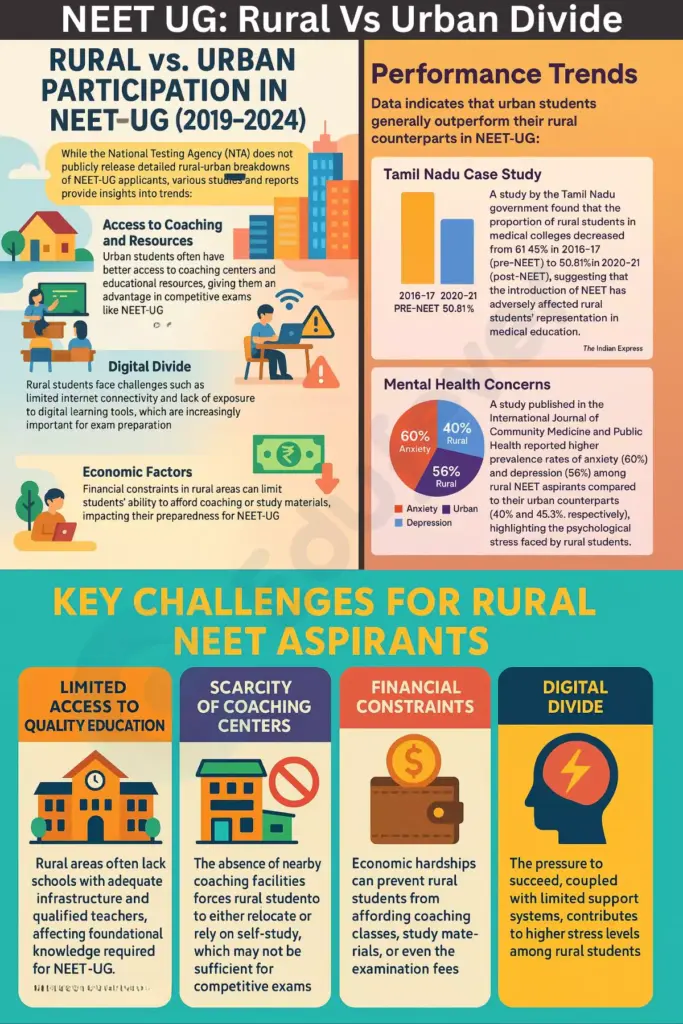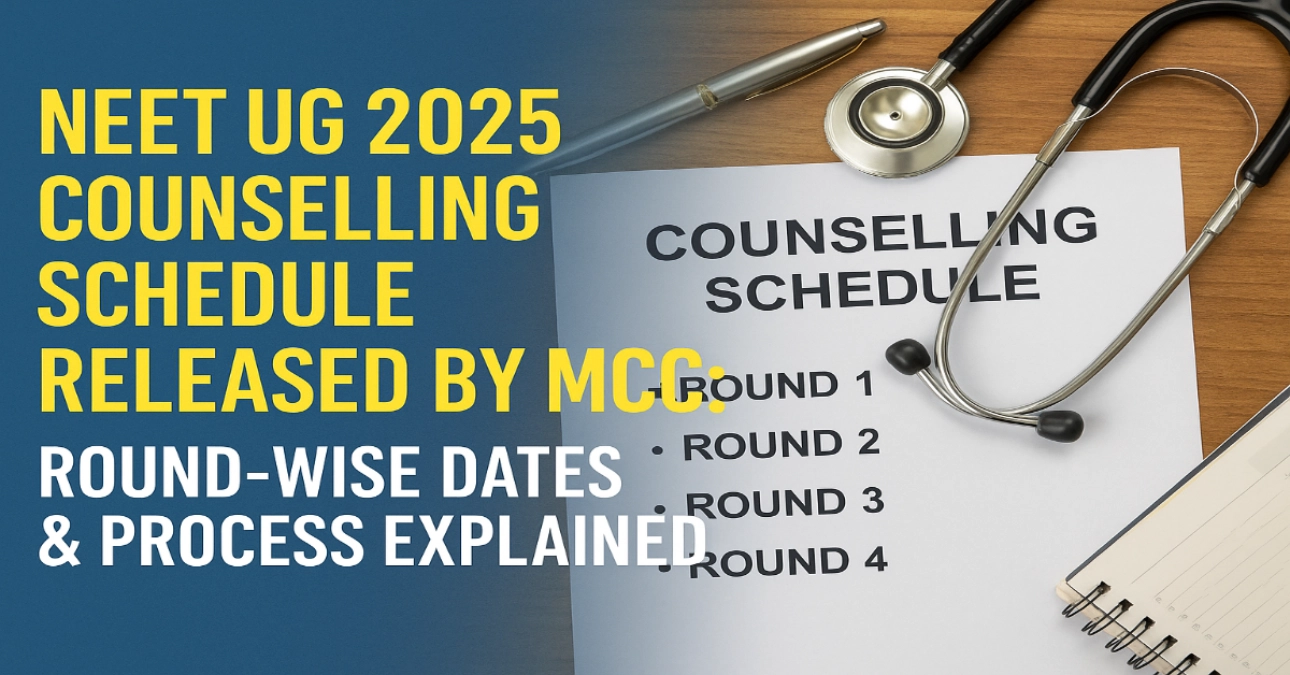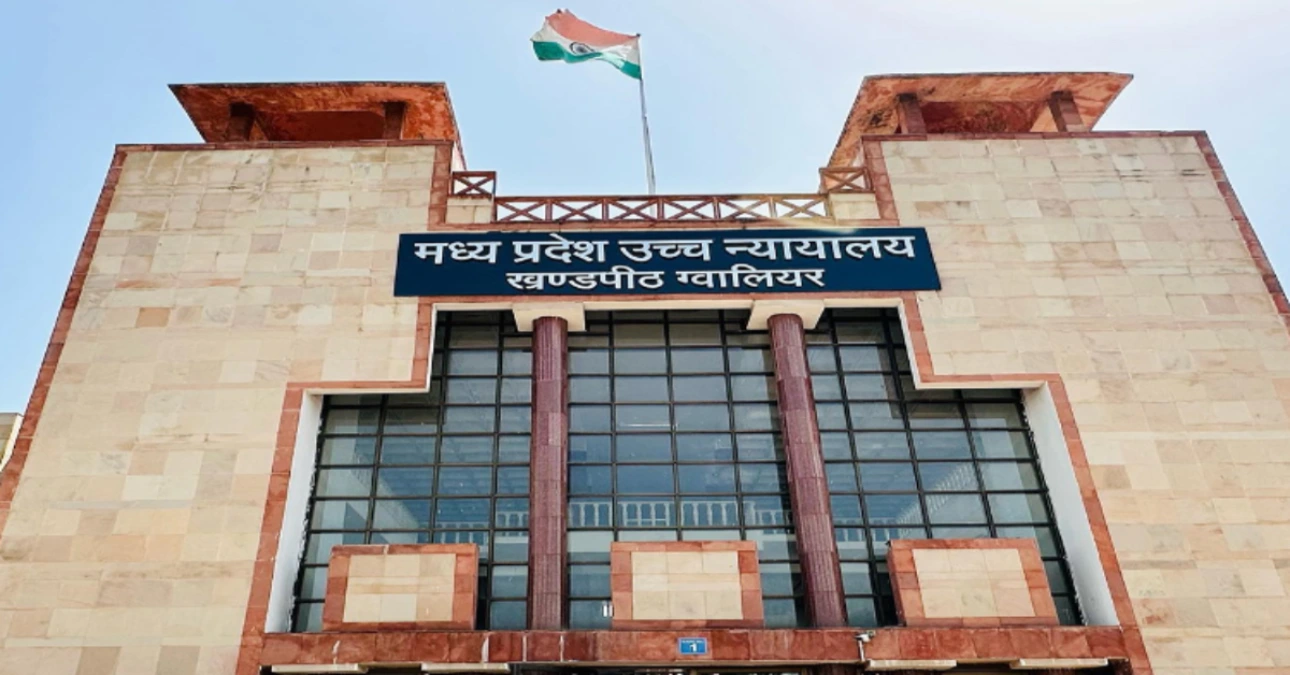NEW DELHI: For years, India’s National Eligibility cum Entrance Test (NEET UG) was largely dominated by urban aspirants with access to coaching and resources. But NEET UG every year rewrites this narrative.
This shift is not a statistical anomaly—it’s a result of evolving preparation strategies, digital access, localised coaching, and targeted government initiatives. In this article, we understand into what changed and how India’s rural youth are rewriting the story of medical aspirations.
Rural Surge in NEET UG
According to data:
| Metric | NEET UG 2023 | NEET UG 2024 |
| Rural Candidates Registered | 8.2 lakh (out of 20.8L) | 9.6 lakh (out of 24.1L) |
| First-Time Rural Toppers in Top 1000 | 47 | 88 |
| Avg. Rural Score (All Candidates) | 493 | 522 |
| Govt School Candidates in Top 5000 | 382 | 781 |
Why Are Rural Students Suddenly Cracking NEET?
1. EdTech Penetration in Villages
Platforms like PhysicsWallah, Aakash BYJU’S NEET Live, Unacademy, and Vedantu have launched rural outreach programs or affordable subscription models that require only a smartphone and basic internet.
- PhysicsWallah’s free test series reached over 20 lakh rural NEET aspirants in 2024–25.
- Offline-to-Online hybrid coaching centres in tier-3 towns have democratized access to NEET-level content.
- YouTube-based preparation (e.g., channels like NEET Ki Pathshala) contributed massively to conceptual clarity.
“I prepared using only free YouTube videos and mock tests on mobile. No coaching,” says Anju Roy, a farmer’s daughter from Bihar who scored 671/720 in NEET 2024.
2. Government Schemes and State-Level Boosters
Several state governments and central initiatives have directly impacted rural students’ NEET journey.
Central Schemes:
- PM SHRI Schools (2023 launch): Many government schools now offer NEET-oriented science streams with lab access.
- SWAYAM & DIKSHA platforms: High-quality NEET preparatory content in 13 regional languages.
- Khelo India–Padho India Initiative: Focused on nutrition + academic coaching synergy in tribal districts.
State Govt. Examples:
- Tamil Nadu’s 7.5% NEET quota for govt school students produced 5 rankers in the Top 1000 from rural backgrounds.
- Bihar’s Mukhyamantri Medha Yojana provides up to ₹2 lakh for NEET coaching.
- Rajasthan’s Rajiv Gandhi Career Portal gave personalised NEET counselling to over 40,000 rural aspirants.
3. Rise of Local & Affordable Coaching in Tier-3 Regions
Instead of expensive metros, rural students are now opting for localised coaching with familiar language and faculty.
- Bundelkhand’s “Doctor’s Foundation” in UP saw 27 selections in 2025.
- Sundargarh (Odisha), with zero NEET results a decade ago, now has 22 MBBS selections—many from tribal belts.

New-Age Preparation Strategies Used by Rural Aspirants
| Strategy | Impact |
| Mobile-based mock tests (offline mode) | Increased practice and time management |
| NCERT + video concept boosters | Stronger fundamentals |
| Community study groups in villages | Peer motivation & consistency |
| AI-driven doubt-solving apps (Toppr, DoubtNut) | 24/7 access to help |
| Hindi-medium video explanations | Concept retention improved in local language |
A More Diverse Medical Workforce
The inclusion of rural students into MBBS programs has long-term positive implications:
- Doctors are more likely to serve in rural PHCs post-MBBS.
- Greater linguistic and cultural understanding of underserved populations.
- Reduction in rural-urban health divide by 2030 (as per NITI Aayog projections).
Challenges That Remain
While progress is significant, barriers remain:
- The NEET-PG bottleneck remains steep.
- Language gap in many entrance exams (English bias).
- Lack of mentorship beyond MBBS admission.
- Poor digital infrastructure in remote areas hampers full access to edtech.
From Lagging to Leading
NEET UG is marking a turning point in India’s medical education landscape. The rise in rural toppers reflects not just individual brilliance but systemic shifts in access, affordability, and awareness.
The future might belong to those who once felt left behind as edtech expands. If this momentum continues, NEET UG 2030 could see a majority of top ranks from rural India, an inclusive dream in the making.
As NEET-UG aims to standardise medical entrance examinations across India, it also highlights the urban-rural divide in educational access and performance. Addressing these challenges requires a multiple approach involving infrastructure development, financial support, and psychological assistance to ensure equitable opportunities for all aspirants.




